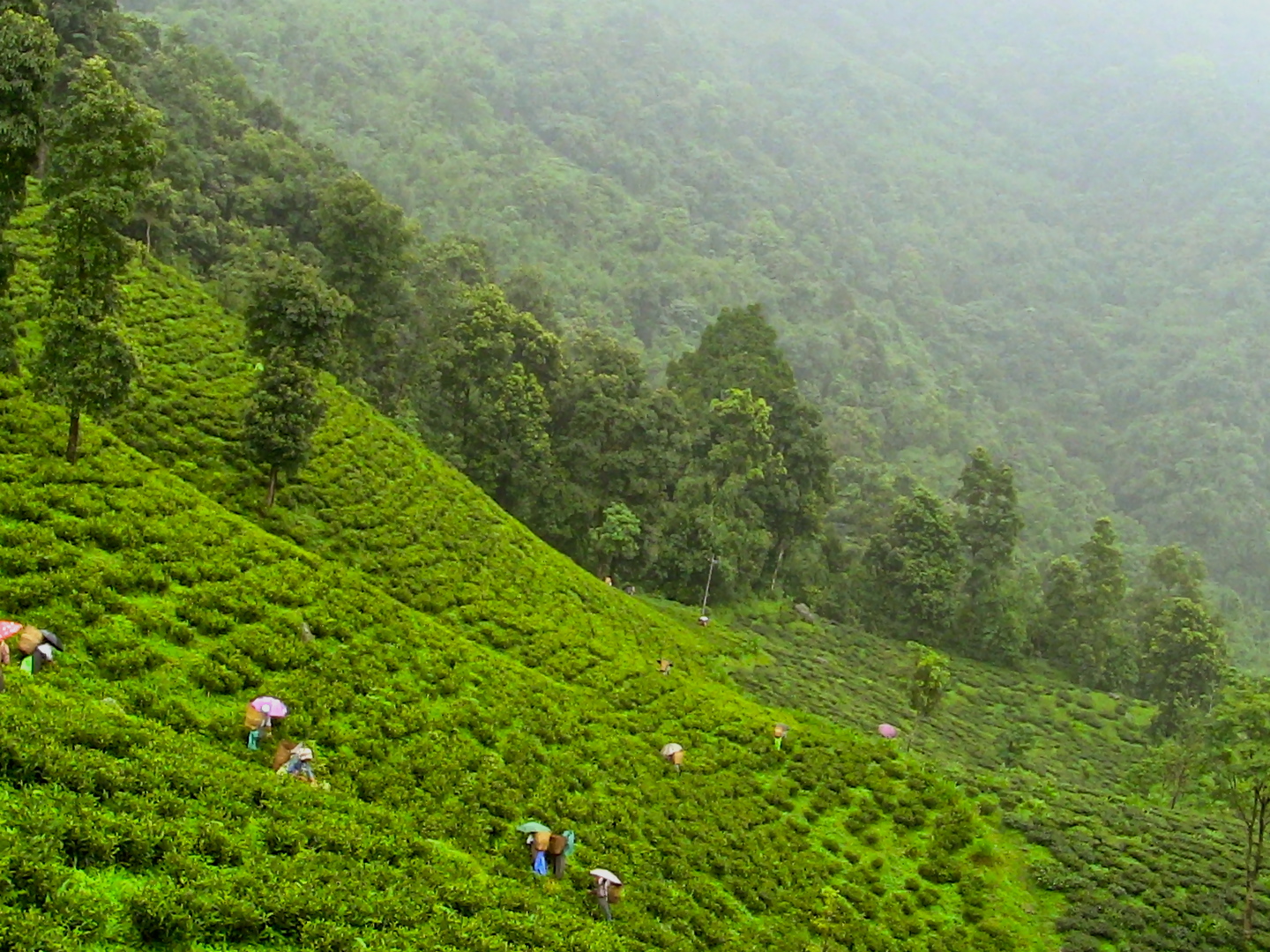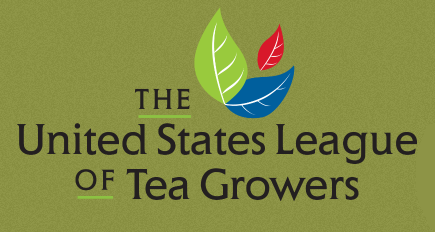Complaints mount as the Tazo transition to Teavana creates shortages… a $600,000 Pu-erh… Cold tea territory… Kumaon tea project funded … U.S. Tea Growers update….
Tazo Transition
Several news reports confirm what online discussion groups have noted for months: the transition from Tazo to Teavana has been bumpy. Grumpy Tazo fans complain they can no longer find their favorites at the chain’s coffee shops while Teavana tea drinkers find their favorites in short supply. Tazo is still available at grocery outlets, natural food stores including Whole Foods and department stores but as of January is no longer sold at Starbucks. Last week

Aly Weisman at the Business Insider complained about a shortage of any tea at Starbucks. “We’ve already switched over but we’re not receiving the supply to meet the demand,” she reported being told by a Starbucks employee in New York City after asking for tea at three different stores. She settled for a cup of hot water, paying 54 cents.
The $600,000 Cake
Want a slice? A 375-gram cake of century-old Pu-erh is on sale this week from the collection of Six Mountains Tea Ltd., in Vancouver, British Columbia. The tea dates to 1910, according to tea specialist Erick Smithe. In this video he tells The Province, there are only 49 cakes remaining, all part of Kennedy Yeung’s collection. Yeung’s father is one of the foremost collectors of vintage teas, which like fine wines, improve with age. In 2013 a stack of Pu-erh cakes sold for more than $1 million per kilo at a Hong Kong auction. Brewing the first pot would cost around $150,000 Smithe estimates, largely due to depreciation that follows breaking up the cake.
Cold Tea Territory
Even in winter America is cold tea territory. Annual spending is much greater for iced and ready-to-drink teas (62%) but hot tea, driven by the specialty category, continues to grow. In the U.S. last year hot tea accounted for 30% of the $4.2 billion in packaged tea sales reported by Nielsen MarketTrack. The category grew 4% last year largely due to pricing of specialty tea which sells for three times more than commodity tea.
Sales of tea in single-serve capsules are growing in double digits.
In the U.S. upscale and specialty tea accounts for 67.2% of sales compared to 32.8% for traditional black tea, despite the fact that black tea accounts for almost 70% volume by weight, according to Nielsen Scantrack.*
*Nielsen ScanTrack National US All Outlets for the 52 weeks ending Aug. 2, 2014.
The annual gathering of The U.S. League of Tea Growers, led by Jason McDonald, concluded this week with a simple pronouncement: “Can you grow tea in the U.S.? Yes!”
The growers are evolving from hobbyists into commercial specialists whose cutting-edge techniques will likely spread to the vast gardens overseas. Growers with at least 25 plants can join with some now cultivating tens of thousands.
The object is not to produce millions of kilos typical of African, Indian, Malaysian, Vietnamese or Sri Lankan plantations. Instead “the U.S. grown tea movement is driven in part by the increasing market demand for specialty tea and the confidence given to small farm startups created by the ‘Farm to Table’, ‘Artisan’, ‘Buy Local’, and ‘Urban Food’ movements of the past decade,” said League President McDonald who owns The Great Mississippi Tea Company.
“I am pleased with the gaining interest in the U.S. grown tea movement and think that this event gave the movement serious traction and direction going into the inaugural membership drive of the USLTG,” he said.
The conference was attended by agribusiness experts and agronomists “the goal of the Roundup was to bring together farmers and aspiring growers to discuss estate operations, Federal, State, and University resources, and tea crop production issues. There was also an opportunity to network and liaison with various research projects already underway here in the USA, according to McDonald.

Growers from as far as Hawaii, Nevada, Michigan and several southern states attended including representatives from Alabama, Florida, Georgia, Kentucky, Louisiana, Mississippi, North and South Carolina, Texas and Tennessee. There are now growers in 17 states. A highlight of the gathering was visits to select estates and research sites in Texas, Mississippi, and Louisiana. Hosts include the East Texas Tea Company, The Great Mississippi Tea Company and J&D Blueberry Farm. The gathering drew 40 to Brookhaven, Miss., during the five-day event with an additional 10 at the East Texas stop.
“This group was actually a blend of old and new folks. We definitely are attracting new folks to our mailing list weekly and are kicking off a membership drive soon,” said McDonald, who mentioned two attendees from the U.K. including co-founder Nigel Melican of TeaCraft.
“It is exciting to see more people getting interested in growing tea within the U.S.,” Dr. Guihong Bi, Assoc. Research Professor of Plant and Soil Sciences at Mississippi State University, said of the tour. “Contacts that we have made through the USLTG have been invaluable in the development of our research objectives,” he said. USLTG maintains a website (www.usteagrowers.com) a blog and can be found on Facebook.
Sponsors of the event include: Fairhope Tea Plantation (Fairhope, Al), Camellia Shop Nursery, Joy’s Teaspoon and SerendipiTea.
Growers next meet at the World Tea Expo, May 6-8, 2015 in Long Beach, Calif. Learn more at: USLTG
Kumaon Tea Project Funded
Young Mountain Tea this week exceeded its Kickstarter goal ahead of schedule. The campaign has generated $26,000 with 12 days to go. It will be funded March 19. Founder Raj Vable contracted with Avani, a non-profit in the Kumaon region of Uttarakhand, northern India, to grow the bushes need to make white tea. The steep hillsides of the Central Himalayas were first planted in tea by the British who later abandoned the gardens due to challenging logistics.

Avani plants tea bushes in a grid that includes indigo and madder, which are sold as raw material to make natural dye, and with sericulture trees that support silk worms whose cocoons are sold to Earthcraft to make silk. The intercropping is a pioneering type of organic permaculture. The first harvest will be in May and made teas will be available late this year.
Vable visited the region for extended stays and formed the company on his return to the U.S. He carefully planned the funding campaign aligning supporters well in advance. He first described his venture at the World Tea Expo in Long Beach, Calif.
“Participating in the New Business Boot Camp at the World Tea Expo gave us confidence and competency at a time when we needed both,” said Vable. “Equally important, it introduced us to the tea community, a welcoming and supportive group of people dedicated to combining their passion for tea with business.” To learn more: www.youngmountaintea.com.
? ? ?
Tea Biz serves a core audience of beverage professionals in the belief that insightful journalism informs good decision-making in business. Tea Biz reports what matters along the entire supply chain, emphasizing trustworthy sources and sound market research while discarding fluff and ignoring puffery.
Tea Biz posts are available to use in your company newsletter or website. Purchase reprint and distribution rights for single articles or commission original content. Click here for details.


